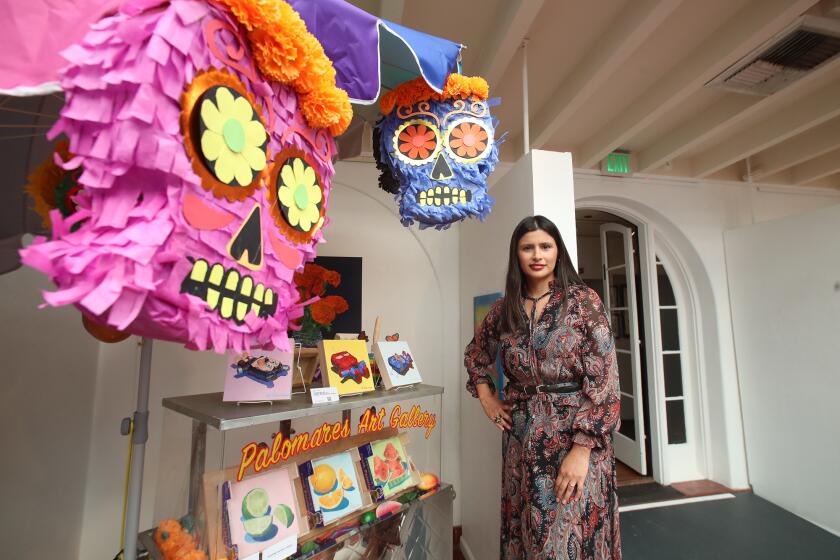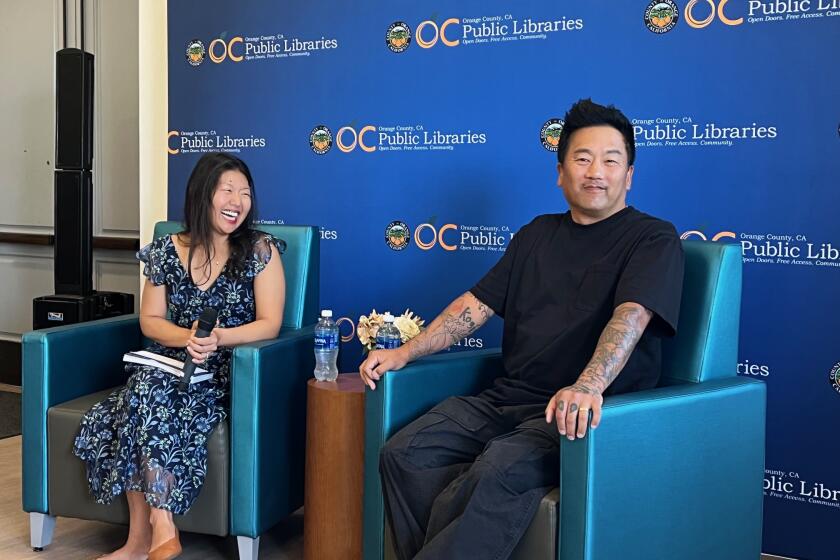UC Irvine’s IMCA staff prepare for a reopening in May after a yearlong closure
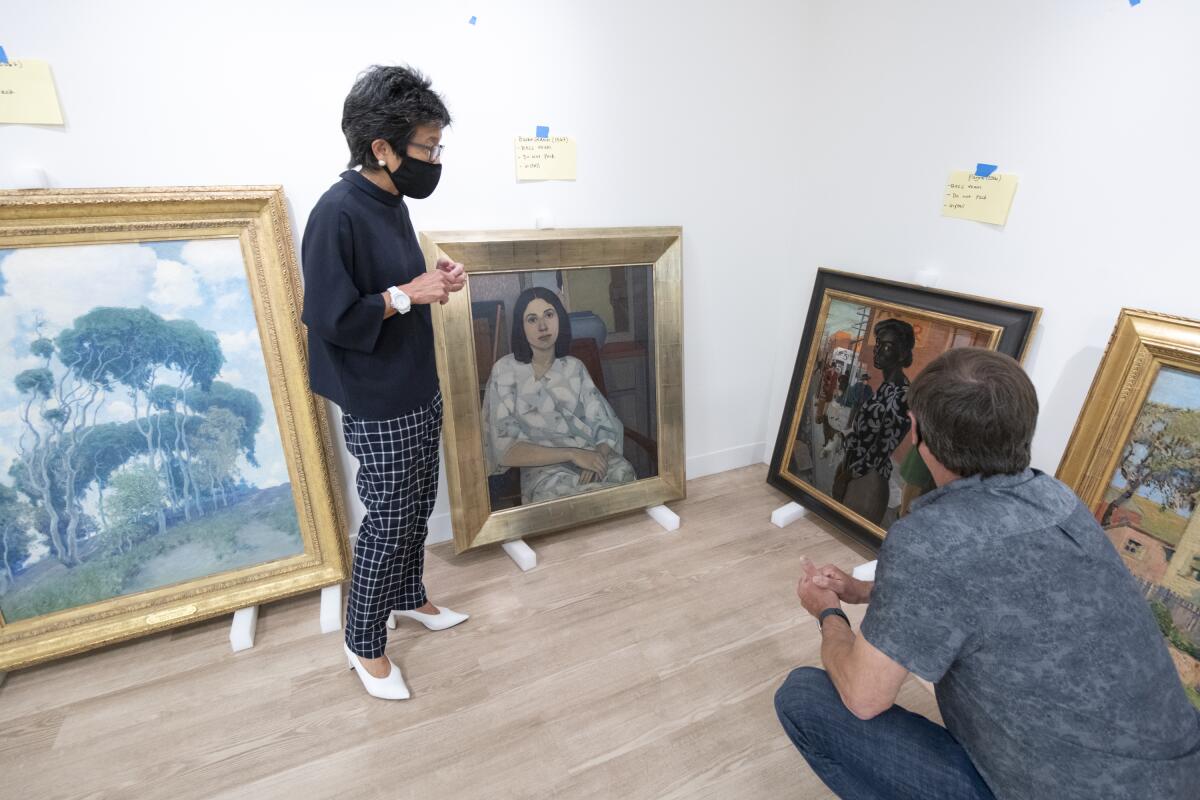
After receiving the green light to reopen from UC Irvine this week, staff at the Institute and Museum of California Art are preparing a new exhibit, “Radiant Impressions.”
The show will focus on 20th-century California painters and how they worked with light. From IMCA’s permanent collections as well as loans from private collections, the exhibit will include pieces by George K. Brandiff, E. Charlton Fortune, Elsie Palmer Payne, Arthur Grover Rider and signature works by Guy Rose including “The Green Parasol” and “Laguna Eucalyptus.”
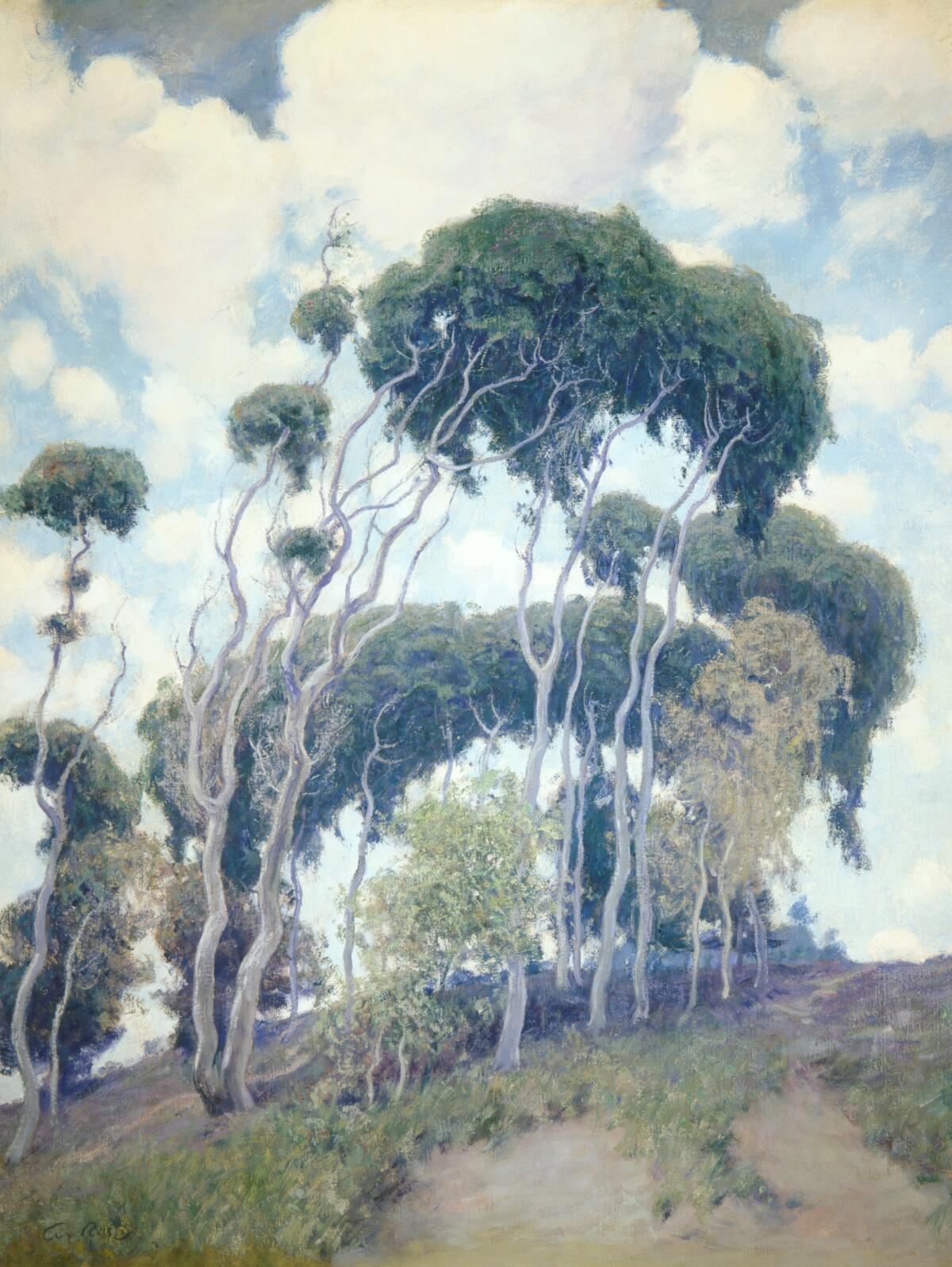
Upon reopening, IMCA plans to take safety precautions including requiring face masks, limiting capacity to 12 people at a time and limiting hours of operation.
“Radiant Impressions,” on view May 15 through Aug. 15, was intended to be shown last year to celebrate Jean Stern’s retirement as the senior curator of California Impressionism at IMCA in July 2020. It’s one of a handful of exhibits since the formation of the museum.
In 2013, UC Irvine officials learned from a trust attorney that an art collection amassed by Gerald E. Buck, an Orange County real estate developer, had been bequeathed to the university. The scale of the collection was impressive — 3,200 paintings, sculptures and drawings focused on the art of California.
Three years later, Joan Irvine Smith and her son James Irvine Swinden donated more than 1,200 California impressionism paintings to the university including works by William Wendt, Granville Redmond and Edgar Payne.
Stephen Barker, dean of UCI’s Claire Trevor School of the Arts, announced the two collections were to be the permanent backbone of IMCA in 2017, and by August 2019 Kim Kanatani became the museum’s director after serving as deputy director and director of education at the Solomon R. Guggenheim Museum in New York.
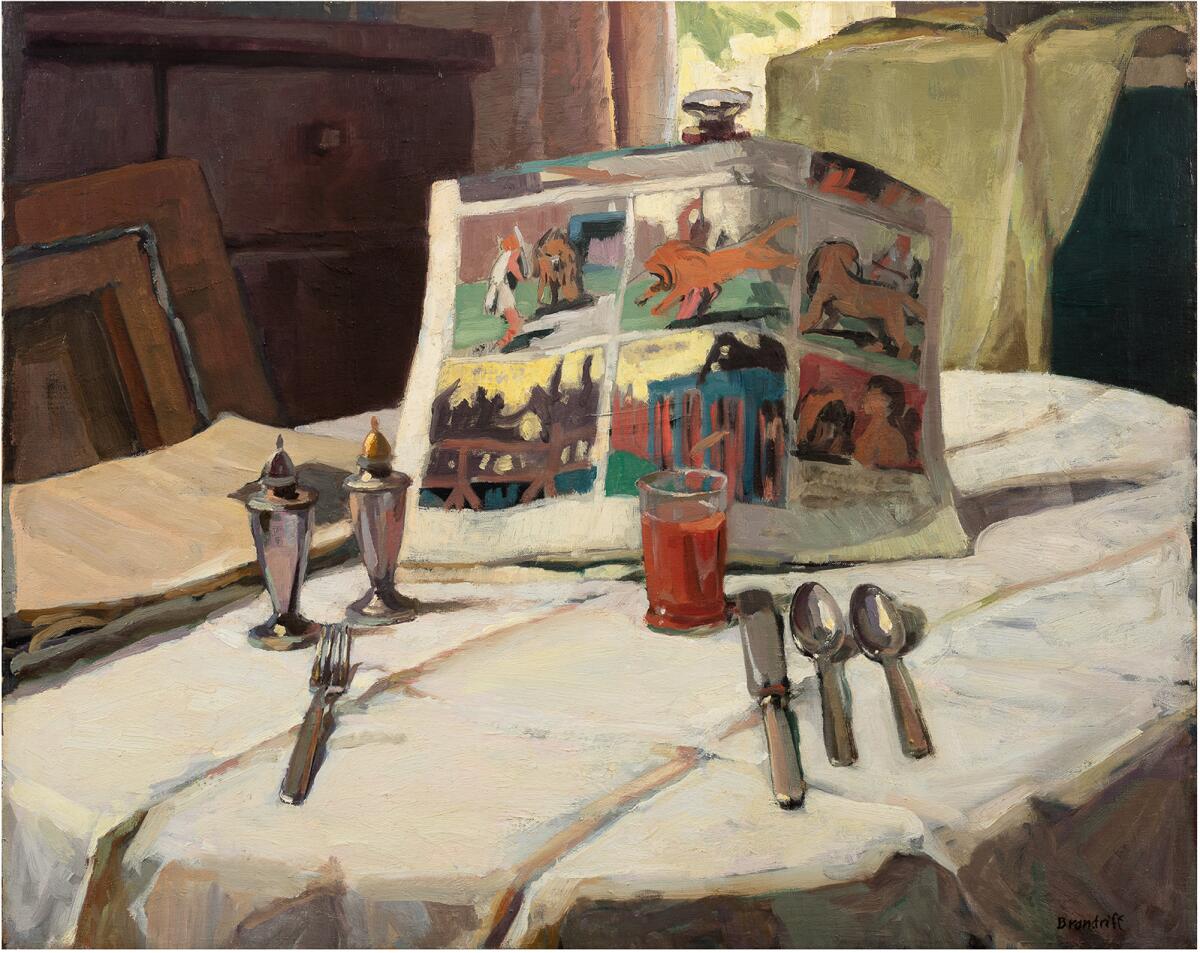
Three exhibits have provided small previews into the collections. “First Glimpse: Introducing the Buck Collection” showcased 50 works including artists Peter Alexander, Richard Diebenkorn, Viola Frey and Helen Pashgian. “El Camino del Oro” focused on paintings of California missions in the 1890s, and “Sublime Wonderlands” featured landscape paintings spanning from the late 1800s to 1980s.
Although the museum is set to be constructed in the years to come aligning with the university’s master plan developed by architect William Pereira, the interim gallery near the John Wayne Airport houses the latest exhibits.
During its yearlong closure due to the coronavirus pandemic, the space was used as part of a full documentation of the 4,500 works in the permanent collections that took about two years to complete.
“The silver lining of this time is the galleries have been empty so we’ve been able to do work in the gallery with COVID restrictions,” said Dawn Minegar, assistant museum registrar. “We can bring works to the interim space that we currently have, and we can unpack them in more detail.”
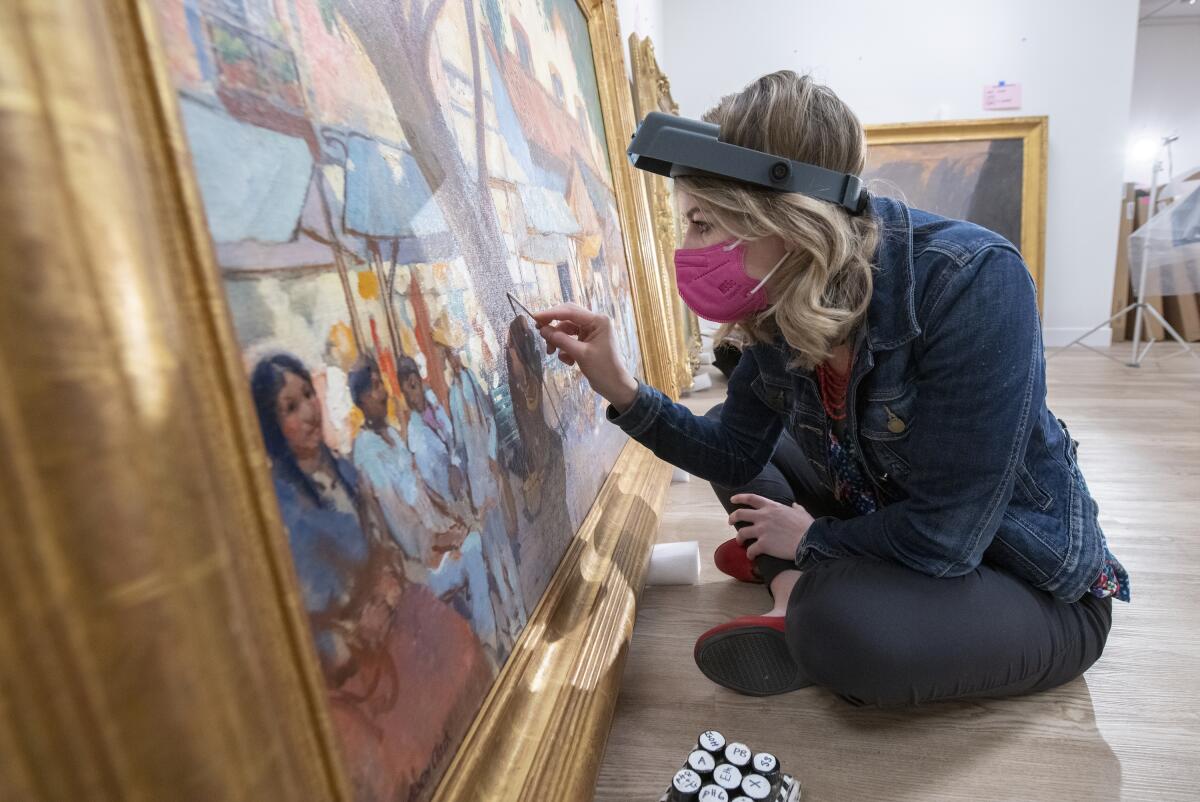
Documentation of the museum’s inventory made it easier to bulk up its digital presence through Instagram, newsletters and educational virtual tours.
“We’re using Instagram as a vehicle to showcase the collection, and we’re taking an educational stance,” said Erin Stout, curatorial and research associate, who has spearheaded the account along with graduate students who assist with research.
Although the collection’s scope of 1960s and ‘70s Chicano artists is limited, the Instagram feed includes work and tidbits from artists Carlos Alamaraz, Frank Romero, John Valadez, Pattsi Valdez, Gronk and Ester Hernandez.
IMCA’s monthly newsletter, with about 5,000 subscribers as of now, provides recommended readings, links and videos about artists like UCI graduate Chris Burden, who was highlighted in the April newsletter.
Virtual school tours, featuring an artist educator over Zoom, have reached about 1,500 public school students in Orange County. The tours also include paintings in “Radiant Impressions.”
Most significantly, the museum has made progress in its concept plans, which will be published in upcoming weeks.
When Kanatani stepped into the director role, she wanted to figure out the vision for the museum before moving forward with the IMCA’s building construction.
“We see IMCA as an epicenter for California art,” said Kanatani. “We envision our future building to be a very compelling destination that is both locally engaged as a cultural catalyst but also globally relevant as a seminal investigator and presenter of California’s influence with art.”
IMCA has conducted focus groups and reached out to stakeholders to talk about the term “California art,” including a discussion last summer with about 40 artists, scholars and former museum directors including Kevin Appel, Bridget R. Cooks, Scott A. Shields, René de Guzman and Chon Noriega.
“This is an advantage of being a startup,” said Kanatani. “We can learn from colleagues. We can learn from the mistakes that have been made in the past that the art world and museums are in the midst of grappling with as we speak, in terms of trying to reformulate their thinking about diversity at the board leadership level, not to mention in terms of staffing.”
In the meantime as IMCA takes shape, its three yearly exhibits and new digital resources could provide previews into art pulled from a collection said to be the best California art collection no one has seen.
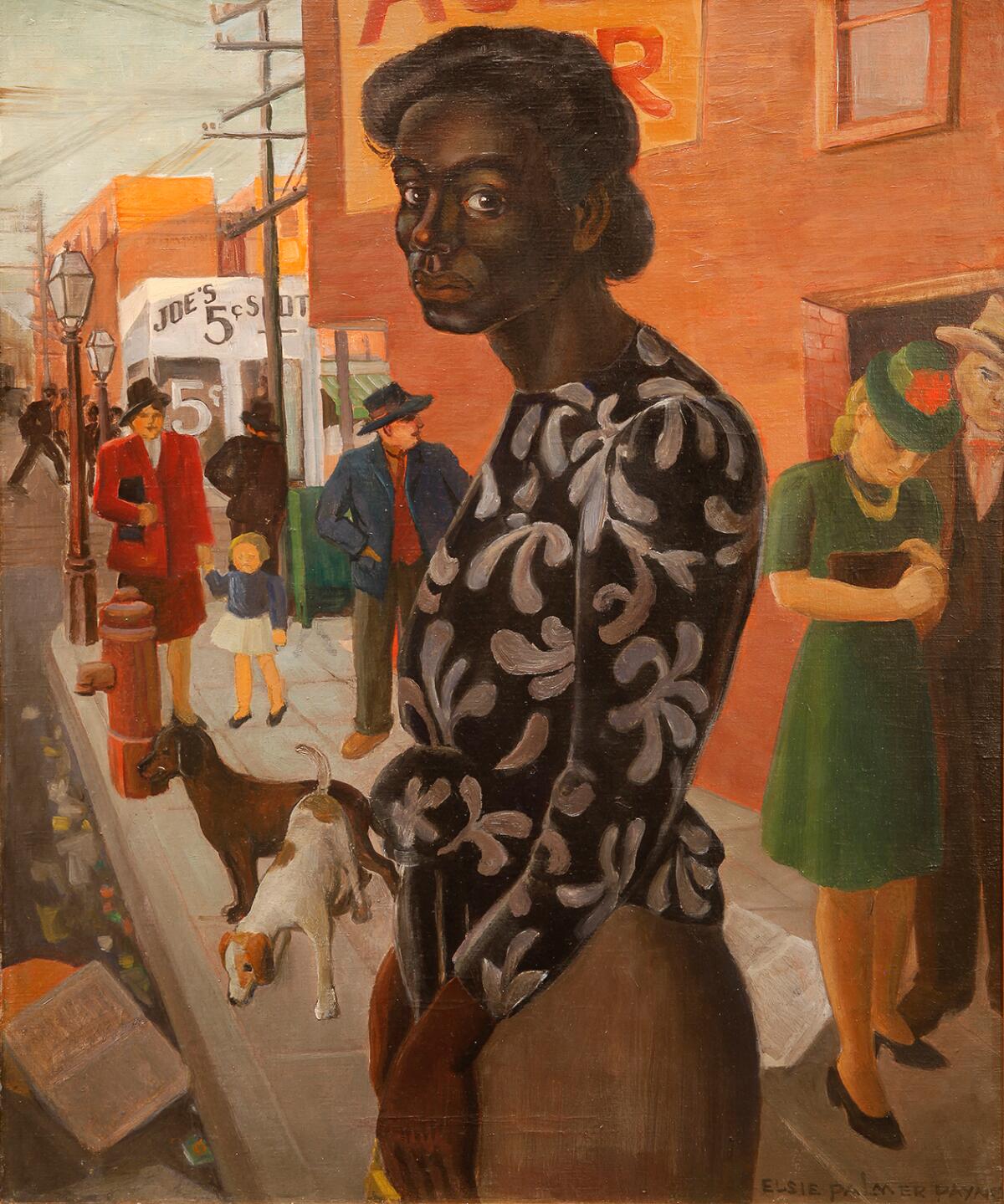
If you go
What: “Radiant Impressions”
Where: 18881 Von Karman Ave. Suite 100, Irvine
When: May 15 to Aug. 15
Cost: Free
Info: imca.uci.edu
All the latest on Orange County from Orange County.
Get our free TimesOC newsletter.
You may occasionally receive promotional content from the Daily Pilot.


